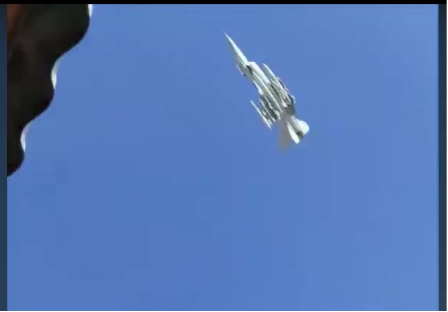In a move that could delay Ukraine’s deployment of F-16 fighter aircraft, the US has decided to start training young Ukrainian cadets to fly the aircraft rather than relying solely on experienced pilots, according to a report from The Wall Street Journal, citing US officials.
This shift is expected to push back the timeline for Ukraine to field a full F-16 squadron by at least several months.
JOIN US ON TELEGRAM
Follow our coverage of the war on the @Kyivpost_official.
The change was prompted by a shortage of experienced Ukrainian pilots with the necessary English skills, many of whom are still needed in active combat.
US officials believe cadets, who are less tied to current operations and Soviet legacy methods and pilot techniques, are also better suited to learning under Western training standards.
Unlike seasoned pilots, who can bypass basic flight instruction, cadets will undergo a year of foundational training in the UK and France before moving on to F-16-specific courses in the US and Romania.
Nearly all US Air Force, Navy and Marine Corps fighter pilots had no prior aviation experience before entering military pilot training, with the services preferring those who start from square one.
While veteran pilots are still part of the program, this inclusion of cadets is expected to slow the overall process while, according to the US Air Force, increasing the effectiveness within the War on Ukraine and the Ukrainian Air Force integration with NATO.

Worldwide Marches Planned This Weekend Condemning 3rd Anniversary of Russia’s Full-Scale Invasion of Ukraine
As a result, Ukraine likely won’t have a fully operational squadron of 20 F-16s and 40 pilots until at least the summer of 2025. So far, 12 Ukrainian pilots have completed F-16 training, with 11 of them now flying in Ukraine.
Another group of eight experienced pilots is expected to return early next year after finishing their training in Arizona, while cadets who just completed basic instruction in France in the Alpha Jet and have started their advanced training in the F-16 in Romania.
Language difficulties have been a hurdle for Ukrainian pilots in the program. Many have struggled with translating the English-language manuals used for F-16 training. Some pilots, particularly those who began training in Denmark, failed to complete the program.
Even highly experienced Ukrainian pilots used to flying MiG-29s in combat have found the transition to US training methods challenging, which has led to tension between NATO instructors and the Ukrainian trainees.
The crash of Ukraine’s first F-16 during a Russian missile strike on Aug. 26 has also raised concerns about whether the pilots are being rushed into combat. Ukrainian pilot Oleksii Mes, who died in the crash, had only recently completed training.
Critics point out that Western pilots usually take years to train in the F-16, while Ukrainian pilots have been on a fast-tracked six-to-nine-month schedule.
After the crash, President Volodymyr Zelensky dismissed Ukrainian Air Force Commander Mykola Oleshchuk on Aug. 30, though officials said the move was unrelated to the incident.
The F-16 went down on Aug. 26 during a large-scale Russian aerial attack. The Armed Forces of Ukraine reported that American fighters were involved in repelling the strike alongside anti-aircraft missile units.
Communication with one of the aircraft was lost during the operation, and it was later confirmed that the plane had crashed, tragically killing the pilot, Oleksii Mes, callsign “Moonfish.”
According to CNN, Oleksii Mes and Andriy Pilshchikov, another pilot who died in a training accident in 2023, were prominent figures in Ukraine’s efforts first to incorporate with NATO aviation (Pilshchikov) and later to secure the F-16 fighter aircraft (Mes). Mes was among a select group of pilots trained to fly the F-16 in combat.
The cause of the crash is still under investigation, with possible reasons ranging from pilot error to a technical malfunction, friendly fire from Ukraine’s own air defense systems, or his aircraft having a tragic encounter with debris from the target shot down by him or by air defense weapons.
You can also highlight the text and press Ctrl + Enter











